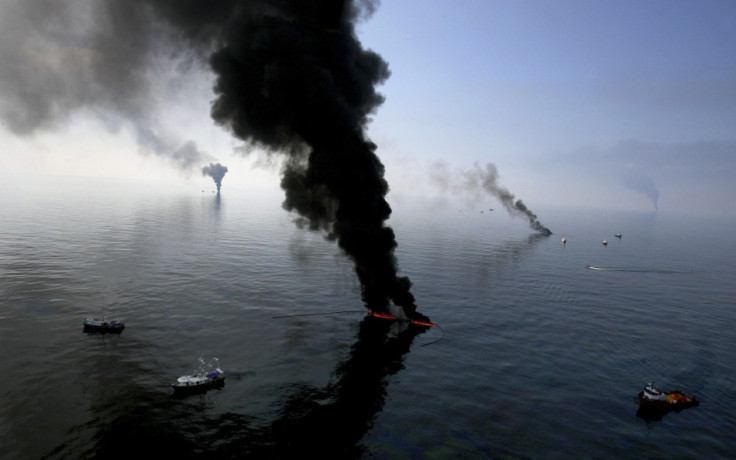BP Gulf of Mexico Oil Spill: Halliburton Admits to Destroying Deepwater Horizon Disaster Evidence
Halliburton joins BP and Transocean guilty pleas in Gulf of Mexico oil spill case

Halliburton will plead guilty to destroying evidence about BP's Gulf of Mexico oil spill in 2010 which resulted in one of the worst environmental disasters in recent history.
The US Department of Justice confirmed that is had filed charges alleging destruction of evidence against the oilfield services company in a district court in Louisiana.
As part of a plea agreement, Halliburton has also agreed to pay the maximum statutory fine of $200,000 (£130,000, €151,000).
In addition, it agreed to three years probation and to help the government's investigation into the Deepwater Horizon drilling rig explosion, which resulted in billions of barrels of oil spilling into the ocean.
Separately, the world's second-largest oilfield services company made a voluntary contribution of $55m to the National Fish and Wildlife Foundation.
The settlement still requires court approval.
"A Halliburton subsidiary has agreed to plead guilty to one misdemeanor violation associated with the deletion of records created after the Macondo well incident, to pay the statutory maximum fine of $200,000 and to accept a term of three years probation," Halliburton said separately in a statement.
The company added that the Department of Justice will not pursue further criminal prosecution of it or its subsidiaries for any conduct relating to or arising out of the disaster.
Halliburton is the third of three major companies at the centre of the oil spill to admit criminal wrongdoing, following oil giant BP and rig operator Transocean.
Destruction of Evidence
The DoJ noted that Halliburton, which had provided cementing services to help seal the Macondo oil well, recommended using 21 centralisers to improve cementing before the blowout in the Deepwater Horizon rig. However, BP , which owned 65% of the well, preferred to chose only six.
Centralisers are protruding metal collars affixed at various intervals on the outside of the production casing, a long, heavy metal pipe set across the area of the oil and natural gas reservoir. Use of centralisers can help keep the casing centred in the wellbore away from the surrounding walls, thereby improving the quality of cementing around the bottom of the casing.
Halliburton ordered workers to destroy computer simulations that showed little difference between using six and 21 centralisers during an internal probe into the cementing, according to the DoJ.
Efforts to forensically recover the original destroyed computer simulations were unsuccessful.
"In agreeing to plead guilty, Halliburton has accepted criminal responsibility for destroying the aforementioned evidence," the DoJ said.
The Disaster
On 20 April 2010, the Deepwater Horizon rig experienced an uncontrolled blowout and related explosions and fire, which resulted in the deaths of 11 rig workers and the largest oil spill in US history.
BP had accused Houston-based Halliburton, its contractor, of destroying evidence and asked it to pay for all damages. BP set aside $7.8bn last year to pay compensation for the oil spill.
Halliburton said in April that it was trying to settle claims in the trial, but the guilty plea by the company may indicate a weakness in its position in negotiating a settlement, according to industry observers.
© Copyright IBTimes 2025. All rights reserved.






















